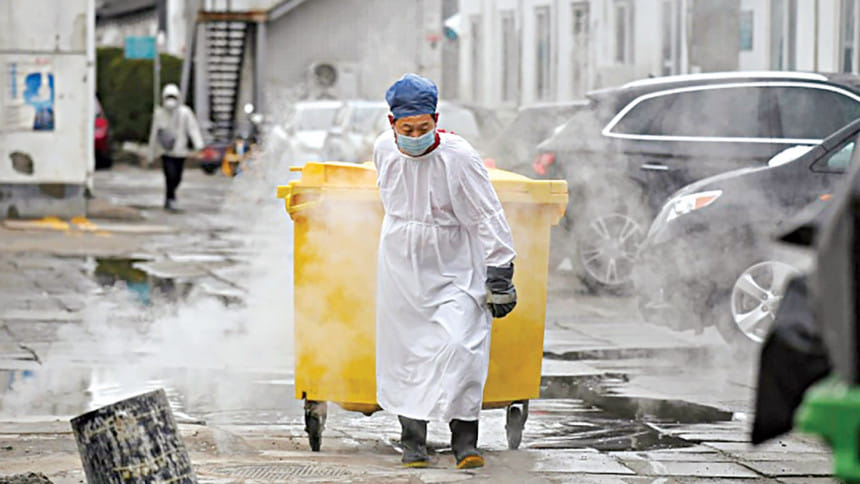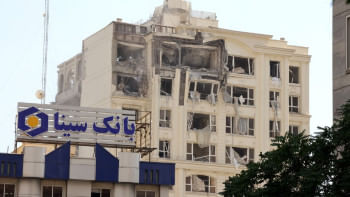Can Bangladesh cope with covid-19 medical waste?

There are now almost three million confirmed cases of coronavirus worldwide, and over 200,000 deaths have been reported. Covid-19 is a dangerously contagious disease that has spread in 207 countries across the world at lightning speed. Social distancing has been the principal prevention for the virus; yet, it has already spread into 57 districts in Bangladesh. Patients are being treated in hospitals designated for Covid-19 treatment, and others are being quarantined at home and in designated centres.
Covid-19 is also producing large quantities of hazardous medical waste, with personal protective equipment (PPE) used in hospitals being the main component. World Health Organization (WHO) standard PPE are one time use—every set of PPE becomes hazardous medical waste after being used for a single time. Besides PPE, there are other types of hazardous waste like facial tissue, gauze pieces, masks, oxygen masks, test tubes of nasopharyngeal swabs, saline bags, disposable syringes, needles etc that are being used to treat patients.
As of April 24, the government has distributed 12,50,000 PPE sets to hospitals. These sets, when used, will produce approximately 18,70,000 kilograms of hazardous medical waste. More use of PPE will produce more medical waste, and health care workers are also using PPE that are not part of government supplies. PPE comprises of cover-all (the gown for covering the body), long foot cover, face mask, a pair of hand gloves, mask, goggles and face shield. All these components are one time use, except the goggles and face shield, which experts opine may be reused following standard disinfecting procedure. However, the other components of PPE have no scope of reuse, and they have to be discarded according to standard protocols to ensure the safety of physicians, nurses and technicians. For example, if a physician has attended Covid-19 patients for a couple of hours and goes off duty, the PPE he is wearing shall be discarded in the "doffing" room under strictly controlled procedure. As he enters the doffing room, disinfection of protective gear is to be done first, followed by removal of protective components in sequential order. Then, all these components are to be stored in sealed boxes or biosafety bags. Putting on PPE components is called "donning". It is done in a separate room following the reverse procedure of doffing.
The issues that we should now be focusing on are in-house storage, transportation and final disposal of hazardous waste generated from Covid-19 treatment. Frankly speaking, visits to health care establishments (HCE) in my former capacity as Chief Waste Management Officer of Dhaka North City Corporation portrayed a grim picture about in-house storage arrangements of hazardous medical waste. It has been confirmed from concerned people that these healthcare establishments are not equipped to manage the highly contagious waste generated from Covid-19 treatment. But whatever the state of the HCE, the waste must be disposed. So where can they do that?
One NGO in Dhaka has stepped up to this job. They collect medical waste from hospitals and clinics in open drums and transport them to disposal sites in covered vans. Medical waste is then treated in a plant in Matuail Landfill in Dhaka South City Corporation. The facility, although not modern, is the only option for the people of Dhaka—located 27 km from Kuwait Bangladesh Friendship Government Hospital in Uttara. However, unsealed collection and transportation of Covid-19 waste over such long distances is certainly dangerous, and medical waste workers are also unwilling to handle this waste. If the workers do not collect, how can the hospitals designated for Covid-19 treatment dispose of their waste? We found that some hospitals that have a backyard are putting their waste into a ditch and burning it. Ideally, medical waste must be burnt under controlled environments at more than 700 degree Celsius, and the flue gas should be released into the environment after filtering harmful particles. But since we have not cared to develop our medical waste management systems up to this point, we have to accept the medical waste management during the pandemic is in emergency mode, and our hospital waste management in the capital is making do with whatever limited resources they have. A better situation cannot be expected in other hospitals down the ladder in the upazilas.
But our problems of waste management are not limited to effective waste disposal only; identifying that waste can be as much of a problem as well. Take the issue of cover-alls. There are a lot of look-alike cover-alls found in medicine stores and shops. These look-alikes are used by people not engaged in treating patients. If they are disposed of in the municipal dustbins or dumped on the road side, surely no one can confirm its source. Besides cover-alls, hand gloves and face masks are also regularly found in the municipal bins that eventually go into the landfill. Uncontrolled disposal of medical waste such as this carries direct health hazards, both to society and those who handle it.
Disposal of patient's personal clothing is also another arena that we need to focus on. Who has the responsibility to dispose this—the hospital, or the patient's family? What protocol will they follow? Policy making authorities need to immediately issue advisory guidelines regarding this in the interest of public health safety.
Most importantly, we must learn from this lesson and make a firm commitment to develop state of the art hazardous medical waste management systems. City corporations and municipalities should lead this hazardous medical waste management system with technical advice from the Directorate General of Health Services. Finally, city corporations and municipalities should develop respective organisational capacity to lead waste management systems effectively and efficiently.
Commodore Mohammad Abdur Razzak (Retd) is former Chief Waste Management Officer of Dhaka North City Corporation. He can be reached at [email protected].

 For all latest news, follow The Daily Star's Google News channel.
For all latest news, follow The Daily Star's Google News channel. 



Comments